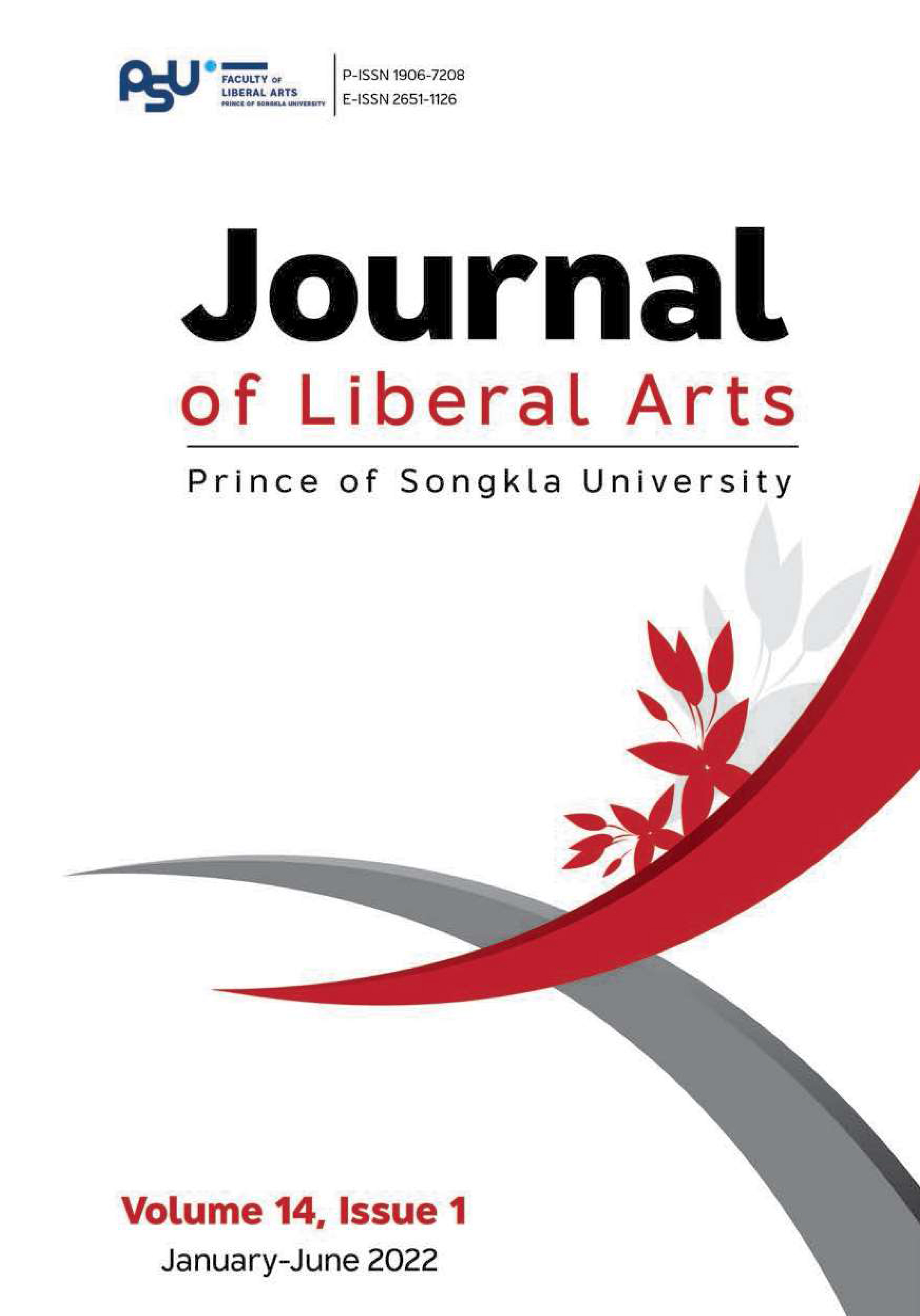An Analysis of Repetition in Barack Obama’s Eulogies
DOI:
https://doi.org/10.14456/jlapsu.2022.1Keywords:
repetition, illocutionary act, rhetorical devices, Barack Obama, eulogyAbstract
This research aims at studying the use of rhetorical devices as a significant component in Barack Obama’s successful public speeches. From various rhetorical devices, this study explores the types, functions, and purposes of repetition in Obama’s eulogies for Ted Kennedy, Robert Byrd, and Beau Biden III. The study deals with five types of repetition in words, phrases, and clauses: anadiplosis, anaphora, epanalepsis, epistrophe, and polyptoton. Repetition is classified as having four objectives: to create emphasis, to call attention, to appeal to emotion, and to add rhythm. Moreover, to interpret the speaker’s purpose, the five types of illocutionary acts based on John R. Searle (1979) are employed: assertives, directives, commissives, expressives, and declaratives. The results show that from sixty-three samples, anaphora is the most frequently applied to create emphasis. Assertive is the main purpose of the anaphora in selected eulogies. Obama uses anaphora to emphasize a subject, an event, a point, and as a tool to alter the audience’ s mood. Therefore, the use of anaphora in Obama’ s eulogies demonstrates the effect of this rhetorical device on the audience’s emotion and reveals his intention.
References
Alreza, E. R., Natsir, M., & Valiantien, N. M. (2019). An analysis of illocutionary acts in Yes, We Can Speech by Barack Obama. Jurnal Ilmu Budaya, 3(1). doi:10.5281/ilmubudaya.v3i1.1596
Al-Saeedi, H. M. A. (2017). The function of repetition in Trumps inaugural address: A discourse analysis study. Journal of Education College Wasit University, 1(28), 709–732. doi: 10.31185/eduj.vol1.iss28.34
Austin, J. L. (1962). How to do thing with words. Clarendon Press.
Corbett, E. P. J. (1965). Classical rhetoric for the modern student. Oxford University Press.
Cuddon, J. A. (2013). A dictionary of literary terms and literary theory (5th ed.). Hoboken, NJ: Wiley-Blackwell.
Merriam-Webster. (n.d.). Eulogy. In Merriam-Webster.com dictionary. Retrieved May 17, 2022, from https://www.merriam-webster.com/dictionary/eulogy
Farnsworth, W. (2011). Farnsworth’s classical English rhetoric. David R. Godine.
Fortenbaugh, W. W. (2007). Aristotle’s art of rhetoric. In I. Worthington (Ed.), A Companion to Greek Rhetoric (pp. 107-123). Blackwell Publishing.
Ghosal, M., & Murphy, D. M. L. (2014). A study on Aristotle’s rhetoric. Research Journal of English Language and Literature (RJELAL), 2(4), 249-255.
Harris, R. A. (2013). A handbook of rhetorical devices. Prestwick House.
Hashim, S. S. M. (2015). Speech acts in political speeches. Journal of Modern Education Review, 5(7), 699–706. doi: 10.15341/jmer(2155-7993) /07.05.2015/008
Huang, Y. (2007). Pragmatics. Oxford University Press.
Ihsan, M. D. (2018). Repetition values on Martin Luther King Jr. Speech. JEES (Journal of English Educators Society), 3(2), 178. doi: 10.21070/jees.v3i2.1236
Kennedy, G. A. (1994). A new history of classical rhetoric. Princeton University Press.
Lanham, R. A. (1991). A handlist of rhetorical terms (2nd ed.). University of California Press.
Leech, G. N. (1980). A linguistic guide to English poetry. Longman.
Searle, J. R. (1979). Expression and meaning: Studies in the theory of speech acts. Cambridge University Press.
Taping, M. G., Juniardi, Y., & Utomo, D. W. (2017). Rhetorical devices in Hillary Clinton concession speech. Journal of English Language Studies, 2(2). doi: 10.30870/jels.v2i2.2249
Yule, G. (1996). Pragmatics. Oxford University Press.
Downloads
Published
How to Cite
Issue
Section
License
Copyright (c) 2022 Sawanee Phakhasun, Asst. Prof. Dr. Rebecca K. Webb

This work is licensed under a Creative Commons Attribution-NonCommercial-NoDerivatives 4.0 International License.
The authors retain the copyright to their article but the Journal of Liberal Arts, Prince of Songkla University reserves the exclusive rights to first publication.






